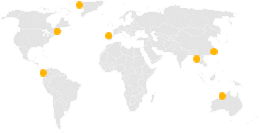1. Bead edge stitch is a relatively complex single-thread chain stitch, which belongs to 104 stitches according to the classification of stitches. Such stitches appear in both directions. If there is no sewn fabric, you only need to sew in the forward direction, and the entire stitch will be easily sewn; the reverse direction will not move, and the more you pull, the tighter. Therefore, each time the finished fabric should leave more no-load stitches at the needle outlet, and the material to be washed needs to be left longer to prevent the stitches from being pulled out.
2. The bead edge stitch is a single-needle chain stitch formed by the organic and close cooperation of the upper two needles and the lower two needles. The stitches are formed as follows:
1. The machine needle goes through the fabric with the suture, and then rises after falling to the bottom dead center. At this time, the suture of the machine needle cannot rise randomly under the resistance of the presser foot and the fabric, so the first thread of the machine needle is formed. ring. like:
2. At this time, the hooking looper moves from the front to the back of the needle, and the fork tip of the hooking looper fork goes through the middle 1/2 of the arc groove on the needle, and crosses the needle thread loop. The gap between the hook looper and the machine needle is 0-0.5mm. When sewing thin materials, the gap is preferably zero. The height of the hook looper installed on the hook looper crank is 2-2.5mm, which is ideal and suitable for loops and empty loops formed by various fabrics.
3. When the loop of the machine needle is saturated, the hooking looper passes through the loop of the machine needle instantly, and the loop is forked with the fork of the looper, and moves to the direction of the straight hook to make the original loop. Expand while making this loop of wire form a firm triangle.
4. After the needle and the hook looper straighten the loop into a triangle, the push looper moving from right to left pushes the oblique edge of the triangle loop between the needle and the straight hook in a timely manner.
The rising straight crochet needle is surrounded by the obliquely pushed thread loop at 90°, and the tightness and angle of the surrounding thread loop are changed before and after, which is mainly determined by where the thread loop is sent by the pusher looper: the thread loop is sent far, The thread is tight. The thread of the straight crochet hook can be said to be able to be hooked at all times, but it is easy to make the pusher looper operate slowly when it is retracted, and the slow bounce from the bottom of the needle board will make the bead edge of the loop trace. If the thread is not closed well, the pearl-like upper stitch cannot be formed well; if the loop is sent too close, the looper that pays off the thread too fast will stretch the loop back and relax, and the straight crochet will hook the loose loop. When it is not easy to hook, skip stitches will occur. Therefore, the early or late of the push loop of the push looper and the fast or slow recovery action directly determine the quality of the loop and whether the straight crochet can hang the thread.
5. The machine needle and straight crochet needle rise synchronously. At this time, the straight crochet needle pulls the hooked suture from the needle plate, fabric and presser foot. The machine needle and straight crochet needle start to descend after rising to the top dead center, and the feeding teeth of the bead edging machine send the fabric out of the first stitch. When the needle bar descends, another thread loop is formed above the fabric due to the thread loop dragged from the fabric by the straight crochet needle, and the needle is inserted into this thread loop when the needle descends.
Note: For the thread loop hooked by the straight crochet needle, the thread of the thread loop can be loosened only after the needle is inserted and firmly inserted; if the needle is not inserted well, the thread of the thread loop has been loosened, and the needle cannot easily be inserted into the soft thread. The phenomenon of jumping the bottom bead line occurs when the line loops. When the straight crochet needle is inserted into the fabric, the loop thread is loosened. The straight crochet needle inserted into the fabric hooks the soft loop, which will be blocked by the fabric, and the loop will pop out from the hook of the straight crochet needle and lock above the needle.
6. The needle hangs on the first chain thread loop and then drops to the bottom dead center and then rises again. The needle thread forms a loop again, and the hook looper hooks the thread again. Repeated work forms a perfect pearl shape. chain stitch.




 中文
中文 EN
EN

 Building 4, No. 81, Qingyin Lane, Jiulonghu Town, Zhenhai District, Ningbo, Zhejiang
Building 4, No. 81, Qingyin Lane, Jiulonghu Town, Zhenhai District, Ningbo, Zhejiang 86-0574-86533378
86-0574-86533378 86-15372692818
86-15372692818 908197098@qq.com
908197098@qq.com